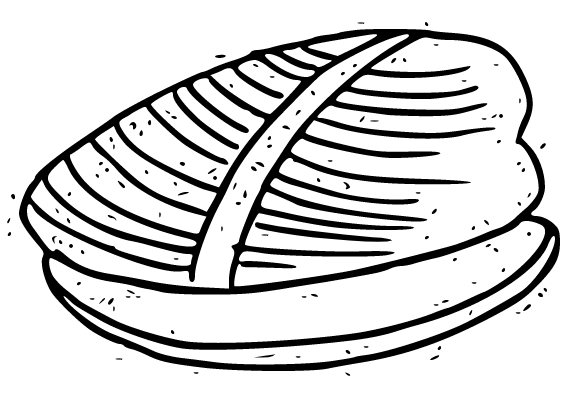-

-
The Discerning Mollusk's Guide to Arts & Ideas
-


The Crib and Other Stories
Albertine Sarrazin
Confingo, Jun 2025
n 1965, an unknown Albertine Sarrazin had two novels published almost simultaneously—L'Astragale and La Cavale—to wild acclaim. In 1966, La Cavale was awarded the prix des Quatre Jurys (Femina, Renaudot, Goncourt, Interallié).
Both novels were translated into English (American), and published by Grove Press in 1967. A penniless Patti Smith bought a copy of Astragal, which she declared life-changing, referring to Sarrazin as “her Albertine”. Lucia Berlin also became a fan, making a “pilgrimage” in Sarrazin's footsteps. By then, Sarrazin was dead, at twenty nine, from a botched operation on her kidneys; a premature end to a life that itself reads like a synopsis of a novel—a life helpfully laid out in more detail in the Biographical Outline that concludes this book.
Born in 1937 in Algeria, abandoned as a baby; at age 2, adopted by a middle aged military doctor and his wife; at 10, brought by them to France (and raped by an older man); receives a privileged education in a private Catholic girl's school; her rebellious nature results in her adoptive father (who later revoked the adoption) committing her to a reformatory, from which she escaped to pursue a life of petty crime, prison sentences, prostitution, and furious writing.
At age 20, a jailbreak results in a broken astragal bone, which has multiple consequences: she is helped by a lorry driver (and criminal himself) who becomes her accomplice and later her husband; the novel born from that accident is the one Smith reads.
The stories were written mostly in 1962/63—after the novels—and while in prison in Amiens; they are all set in that prison environment, and describe it in detail.
The opening lines of the first story, “The Launderer”, preempt an instinctive apprehension at that limited perspective:
“Prison, boring?
“I can assure you, I'm never bored. In general service, you don't get a minute to yourself . . .”
It goes on to to detail a typical day of prison routine, i.e. every day's routine. The coping mechanism is to actively seek work, by taking on orderly's tasks, and make them last, hanging it out. Each story is thus a drawn-out account of the minutiae of that routine, and at some length. If that seems offputting, a strong case can be made for persevering.
Consider what miracles Beckett achieved with the mathematics of his sucking stones in mitigation of life's ennui, or of the routines in Godot, in which, of course, “nothing happens, twice.” Sarrazin pulls off the same trick with similar resource: a strongly idiosyncratic voice and sardonic wit.
Her voice is a product of her upbringing: a privileged education, and her rejection of that for a life of petty crime, plus a penchant for crossword puzzles. The result is a mix of upper class French and street- and prison-slang, larded with puns and foreign borrowings; much like Beckett's erudite tramps. It's very witty.
She also makes use of every small deviation in routine, such as the arrival of a new inmate. And although the setting remains the the same, Sarrazin rings the changes in structure in each story. “Bibiche”, for example, is told by three voices, each commenting on the others: a warder, introduced as Madame, later more personally as Matuchette; Bibiche, the stand-in for Sarrazin; and Dufour, an older inmate who becomes friend and “mother” to Bibiche. So we have a narrative triptych, multiple perspectives.
“The Holy Joe Affair” begins with the return to prison of Mary, a prematurely aged recidivist, and revolves around the difficulties of procuring a decent cup of coffee—the Holy Joe of the title, “cup of Joe” being slang I hadn't come across before, “holy” in that it is enjoyed, at its best, as a secular communion between close friends. There is an intricacy to getting that coffee at its best, even at its second or third best. Simplest is to “canteen” (buy with one's personal cash allowance) the approved brand of ground coffee, Legal, and a portable stove, brewing it in one's cell, strained through a handkerchief and generally tepid. Better is to bribe Mary, with a share of one's ground coffee, to make it for you, Mary now ensconced as an orderly in the laundry, with its stove for heating starch and thus access to boiling water. Even then, one has to tactfully supervise Mary's abbreviated percolation method to obtain any strength and taste. The plot, if it can be called that, involves the discovery that Mary has been receiving a superior brand of coffee from the warders and keeping it to herself. The narrator and her friend find the stash, substitute their own Legal, and look forward to brewing a cup that evening, each in her cell but together in that communion, of “an unspeakably good cup, a holy Blessed Joe”. It's a long story but fascinating in its intricacies of prison life and politics.
The last—title—story is, for me, the best, because the most structured, and shortest. It's also the most personally revealing, a monologue about the making of a Nativity crib, over a single day. The detailed description of the making, from salvaged scraps, and the ingenuity involved, structures the story satisfyingly tightly while allowing for those personal asides and digressions.
The collection ends with “Journey To Tunis”, really an essay rather than story, and directly autobiographical. The journey was made by Sarrazin after being awarded that prize for La Cavale—the prix de Quatre Jurys, presented in Tunis. Unburdened by the need for storytelling, her prose is on holiday, as she is. It's sharply observant, witty, self-depracating. She jokes, for example, after the newspapers, having tipped her to win, had changed their minds, that she was resigned to not winning: “. . . Besides, I never could soften up a jury, let alone four! . . .”
So much wit, zest and joy in life makes her death months later unbearably poignant. The zest is there throughout her work; the same impetuosity in life was also how she wrote—headlong, with little or no correction or revision. The novels were only published after extensive editing and cutting (Simone de Beauvoir requested such with a view to recommending the mss. to Gallimard—whether she did so isn't clear, and it was Pauvert that published them). The stories didn't receive the same editorial attention; they were published posthumously by her husband, presumably as the mss. were left.
But despite the impression sometimes of overwriting, with too much detail, it is, as I have said, worth persevering. Prison life drags; no detail of life in an enclosed environment is superfluous (remember Beckett's “closed-space” stories), and the characterization is the stronger for these details; they are fully rounded characters—allowed to be.
I was reminded most strongly of the stories of Nelson Algren's in The Neon Wilderness—similar environment (the Police lock-up), similar cast; most crucially, a similar “literary lilt and sensuality” (to quote Tom Carson). Algren believed that to strip the writing of those resources in order to achieve a more “authentic”, grittier characterization was to condescend, to render his subjects doubly cheated—once by life, again by literature.
Algren, for all his empathetic commitment, was nonetheless writing from the outside, Sarrazin from the inside, literally, and of her peers. In her world, there was animosity at times, but certainly no condescension. Nor is the reader allowed any.
Inevitably, perhaps, comparisons were made in France at the time with Genet, but there was more than marketing gimmickry in the comparison. There was a (possibly unconscious) Existentialist commitment to freedom in Sarrazin's petty thefts and rebellions; certainly a naive, innate sense of honesty, a furious belief in truth above convention, that could be described as religious. Moor has stated elsewhere that Sarrazin's early writings to her unknown birth mother almost read like prayers. And with as autofictional a writer as Sarrazin, it is not possible to separate life from work—those qualities show through in all she wrote.
There is a very informative Translator's Note as introduction to the collection, worth reading for its insight into the difficulties faced by Moor, especially with the slang—nothing dates faster—but also with precise prison terms. Moor's choices are always assured, fluid, convincing. Sometimes they're inspired. One example will suffice: a description of a used plate left in a cell, containing “congealed beef fat and (Fr.) autres reliefs”. Moor renders this “congealed beef fat and other bas-reliefs”. That “bas-reliefs” is genius.
Such genius won't be surprising if we have read Moor's own work, in her collection The Comet and Other Stories—I recommend you do. The title story in particular is miraculously assured in every detail. Comparing the two collections, we see a contrast between Sarrazin's autofictional impetuosity and Moor's cool appraisal coming from artistic maturity. We need both, delight in both.
What we have, then, courtesy of Confingo, is an engaging, stridently witty voice brought back to life, and a major new voice beginning to emerge.
We also have, on the cover of The Crib, one of the best designs I have ever come across, courtesy of Zoë McLean.

David Rose, born 1949, resident in Britain, is now retired after a working life in the Post Office. His short stories are published widely in the UK and US, including in The Penguin Book of the Contemporary British Short Story (ed. Philip Hensher, 2018) and partly collected in Interpolated Stories (Confingo, 2022) and Posthumous Stories (Salt, 2013). He is the author of two novels: Vault (Salt, 2011) and Meridian (Unthank Books, 2015).